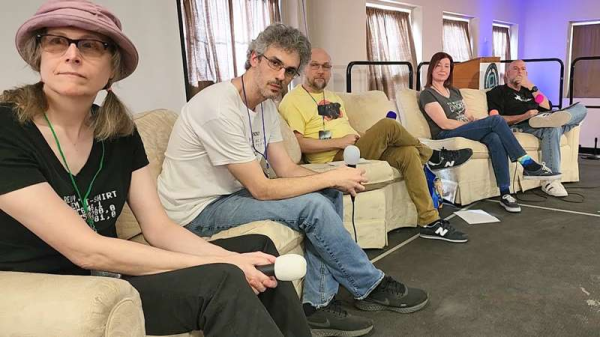Our friend [Fran Blanche] recently recorded what it was like to participate in an energetic round table at the recently held Vintage Computer Festival (VCF) East. Fran joined well known personalities [Jeri Ellsworth], [Adrian Black] of Adrian’s Digital Basement, and Usagi Electric creator [Dave Lovett] with yours truly moderating.
The table-less roundtable discussed the pros and cons of streaming about retro and tech, and what its like to hang yourself out there in video format. Goals and motives differed widely from speaker to speaker and there was some good-natured ribbing about who makes money vs. who simply gets away with spending less.
Most of all fun was had by the speakers as they interacted with each other, and with the audience — and that comfort came across to the standing room only crowd of avid retro-enthusiasts who only told us good things about what they saw and heard that night.
One thing we did note was that every speaker actually knew what microphones were and how to use them.
Want to learn more about the 2023 Vintage Computer Festival East? You can start by checking out our previous coverage, and don’t miss the first in a series of fascinating interviews recorded by the Hackaday crew as they explored this phenomenal retrocomputing event.
Continue reading “VCF East 2023: Retro Luminaries Take The Stage”
















